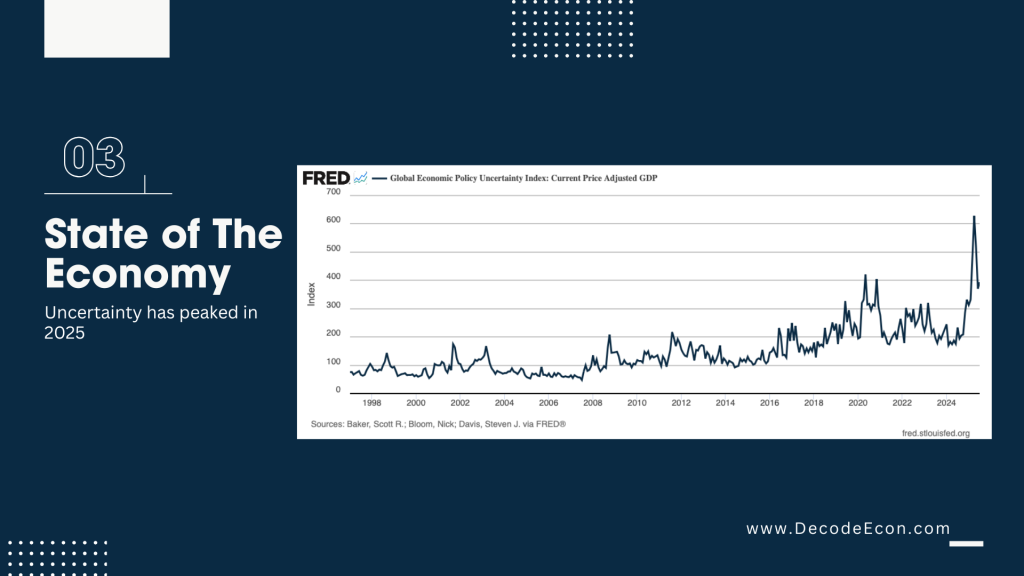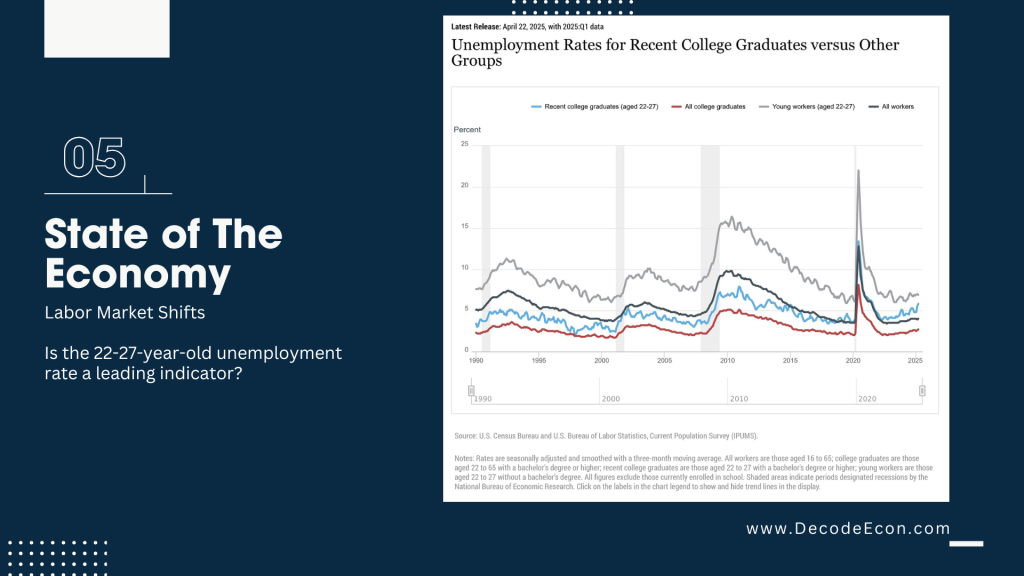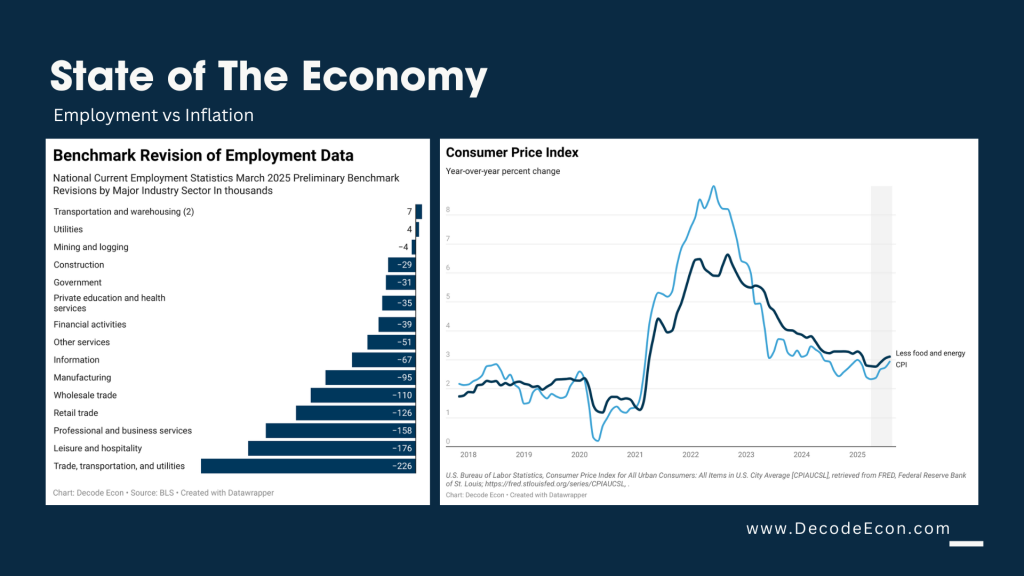Business Hub
Expert Advice + Resources
Business Hub
Expert Advice + Resources
share article:
Unveiling the Canary in our Economic Coal Mine & Other Insights from Dr. A
 In a recent Staffmark webinar “What’s Next for the Economy & Workforce?” Dr. Abdullah Al-Bahrani—economist, educator, and host of Decode Econ known as Dr. A— brought clarity and optimism to a conversation about navigating today’s economic uncertainty.
In a recent Staffmark webinar “What’s Next for the Economy & Workforce?” Dr. Abdullah Al-Bahrani—economist, educator, and host of Decode Econ known as Dr. A— brought clarity and optimism to a conversation about navigating today’s economic uncertainty.
Known for breaking down complex ideas into practical insights, Dr. Al-Bahrani left the audience with a deeper understanding of today’s economic realities and what’s happening while underscoring what Staffmark knows well: businesses can adapt and build certainty into how they operate, especially around their workforce.
Here is a recap of what was shared and learned. You can also watch the Webinar replay here.
Insight 1: 2025 = Peak Uncertainty
Dr. A began by addressing what so many of us already feel but cannot point to: uncertainty is at an all-time high. Using the Global Economic Policy Uncertainty Index, he showed that today’s uncertainty levels are at their peak (at least to date). They even surpass what the world experienced at the height of the COVID-19 pandemic when supply chains around the globe were disrupted.

“The idea here is uncertainty today is higher than it’s ever been in the U.S. economy,” he explained. “You’re feeling it, everybody else is feeling it, and this is evidence that it is here.”
The key driver according to Dr. A? Tariffs and trade policy. While businesses can adapt to clear rules—even tough ones—what’s holding many back is the unpredictability of whether tariffs will be implemented, reversed, or changed. Dr A explained that the ambiguity leads to hesitation, slowing decision-making, and dampening growth.
Insight 2: Meet the College-aged Canary
One of Dr. Al-Bahrani’s most striking points was when he spoke to the challenges facing recent college graduates. While unemployment is rising across all demographic groups, it is rising fastest for new grads.

He provided this clear-eyed look at how employers assess the ROI of talent categories, and why today’s college grads are struggling to find jobs. “Recent college graduates are inexperienced—but they’re expensive, inexperienced individuals,” he explained. “From a business standpoint, that’s the category with the lowest expected rate of return. If you’re going to not hire a group, that is the group you don’t hire.”
To Dr. A, new grads are the official “canary in the coal mine,” signaling what might soon happen to other unemployment categories.
He also pointed to the challenges of growing numbers of people who are experiencing long-term unemployment (out of work for more than 26 weeks).
“Their skills are depreciating,” he said, “and it’s going to become even more and more difficult for them to enter the labor market.” For employers, it means encountering candidates with longer job gaps and a greater need for retraining.
Insight 3: A New Employment Narrative
Dr. A also explained how the labor market narrative shifted recently when the Bureau of Labor Statistics recently reconciled job survey data with actual tax return information. The reconciliation revealed that the market has not been performing as strongly as reported. In fact, nearly one million fewer jobs were created between March of 2024 and March of 2025 than originally reported.

When an audience member asked what caused such a large discrepancy, Dr. A explained that while economists do not know for certain, one likely factor is survey quality. “Survey responses are getting weaker, or the response rates are getting lower,” he said. “Firms are overstating how many jobs they’re creating. Or, in some cases, the companies we reach out to aren’t representative of the full economy.”
He pointed out an important bias: companies are more likely to fill out surveys when business is good. “When life is difficult—budgets are tight, you’re having to fire people. You don’t have time to do this extra work. So, we end up hearing from the companies that are hiring, not the ones that are firing.”
The mismatch between survey responses and tax data underscores how important it is for leaders to look beyond the headlines to understand the challenges and opportunities in front of them.
Insight 4: A New Employment Narrative
Dr. A also pointed to compensation structures as a powerful but often underused tool for navigating uncertainty. “Your pay needs to create some sort of stability for your employees,” he emphasized. Incentive pay programs, when designed well, can both motivate teams and ease the pressure employees feel in uncertain times.
By aligning performance incentives with business goals, companies can improve retention, reward productivity, and give workers a sense of security. These are all critical factors when the outside environment feels unpredictable.
- Advice from Dr. A: How to Navigate Uncertainty
The heart of Dr. A’s presentation was a call for effective, and people-centered management, which is where Staffmark keeps its focus too. His advice included:
Communicate more, not less.
“Your employees and your team need to know that you have a vision and you’re not just waiting on the market to dictate what you should do.”
Avoid micromanagement.
“Because you are under pressure to justify ROI, you might pass that pressure to your employees and overmanage. That causes you to lose employees.”
Set a clear vision.
Inaction becomes contagious. Leaders must demonstrate confidence.
Explore underused pay structures.
Look to incentive and performance pay programs as opportunities to generate stability.
Ending with Optimism
While the data shows headwinds like weaker job growth, rising inflation, and trade uncertainty, Dr A’s underlaying message was of strength. His work and experience reveal that businesses are resilient, and strong leaders can steer their teams through these challenges.
“Trade uncertainty is going to stay here. The question is how are we going to adapt?” he asked. His answer: by communicating openly, setting vision, and refusing to let inaction take over.
That spirit of resilience and optimism around people is exactly what Dr. A brought to this conversation, and why his insights will continue to resonate.
Next Steps with Staffmark and Dr. A
For businesses: If you are looking to build more certainty into your staffing and workforce models, Staffmark can help. Contact Staffmark to start the conversation today.
For ongoing insights: Want more of Dr. Al-Bahrani’s practical, people-first economic commentary? Subscribe to his Decode Econ newsletter for daily takes on how the economy impacts you and your business.